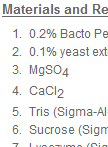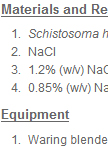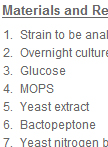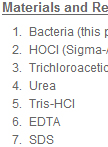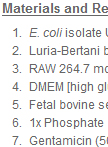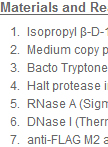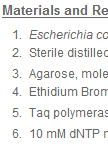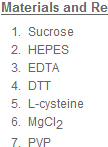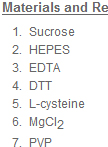往期刊物2012
卷册: 2, 期号: 20
生物化学
Isolate and Sub-fractionate Cell Membranes from Caulobacter crescentus
新月柄杆菌细胞膜的分离和细分级
免疫学
Schistosoma haematobium Egg Isolation
埃及血吸虫卵细胞的分离
微生物学
Minimum Inhibitory Concentration (MIC) Assay for Antifungal Drugs
抗真菌药物的最小抑菌浓度(MIC)实验
Differential in vivo Thiol Trapping with N-ethylmaleimide (NEM) and 4-acetamido-4'-maleimidylstilbene-2,2'-disulfonic acid (AMS)
使用n-乙基马来酰亚胺(NEM)和4-乙酰氨基-4'-马来酰亚胺-2,2'-二磺酸(AMS)进行体内硫醇差速俘获
Intracellular Macrophage Infections with E. coli under Nitrosative Stress
硝化应激下用大肠杆菌感染胞内巨噬细胞
Isolation of Inner Membrane Vesicles from Escherichia coli by Using an Affinity Tag
利用亲和标签(Affinity-tag)从大肠杆菌中分离内膜囊泡
Promoter Orientation of Prokaryotic Phase-variable Genes by PCR
采用PCR进行原核细胞可变基因启动子定位
植物科学
Measurement of NADPH Oxidase Activity in Plants
植物中NADPH氧化酶活性的测定
Glycolate Oxidase Activity Assay in Plants
植物中乙醇酸盐氧化酶活性测定实验


